आजमगढ़ : पल्थी में धूमधाम से मनाई गई डाक्टर काउंट सीजर मैटी की जयंती
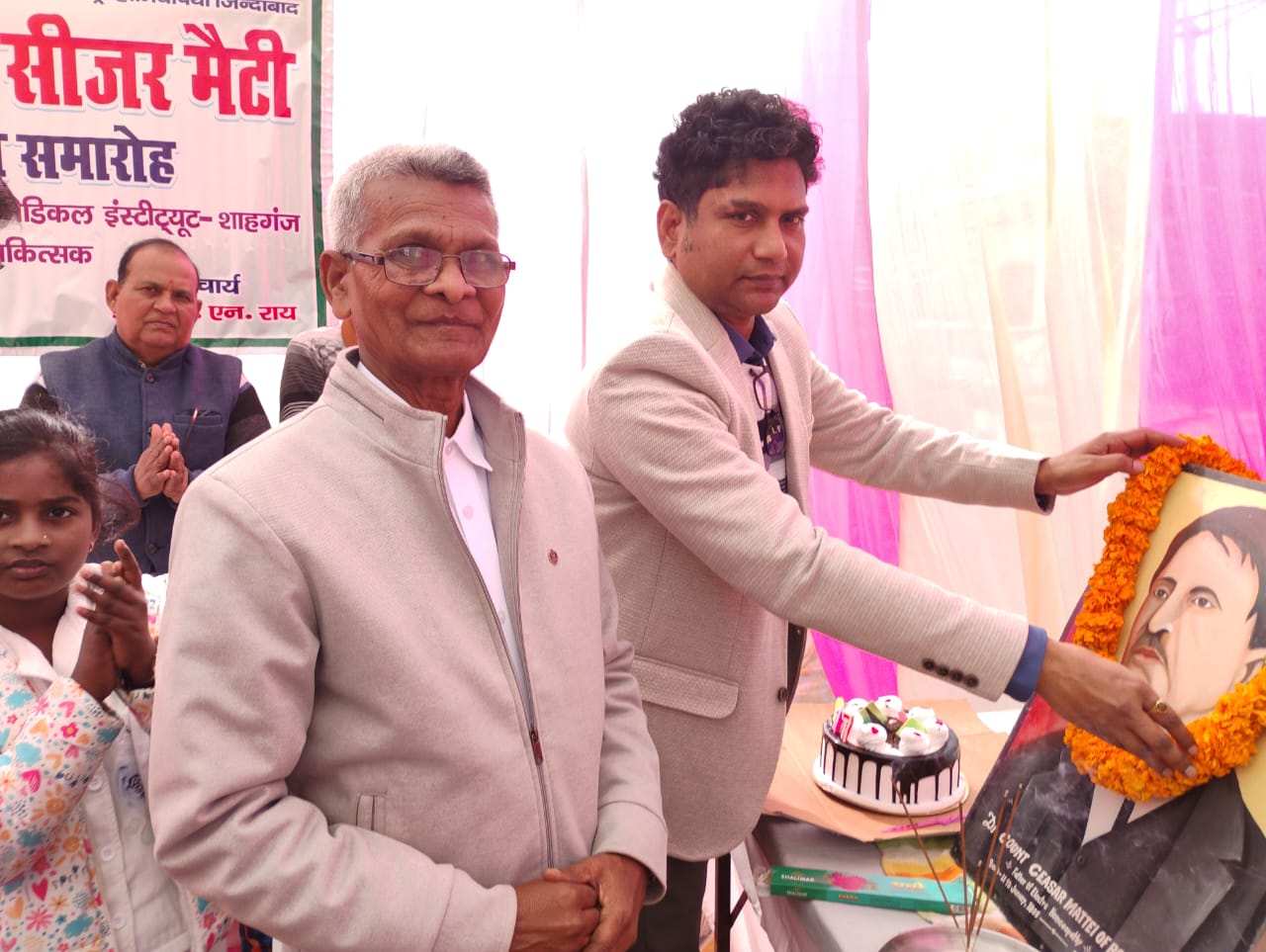
पृथ्वीराज सिंह
दीदारगंज (आजमगढ़ )। दीदारगंज क्षेत्र के पल्थी बाजार में डॉ. काउंट सीजर मैटी की 217वीं जयंती बड़े ही धूमधाम से मनाई गई।इस अवसर पर कार्यक्रम के मुख्य अतिथि डॉ देवी प्रसाद पुष्पजीवी व उपस्थित लोगों ने डॉ. काउंट सीजर मैटी के चित्र पर माल्यार्पण किया इसके बाद मुख्य अतिथि के हाथों केक काटकर कार्यक्रम का शुभारम्भ किया गया। इस अवसर पर मुख्य अतिथि ने डॉ. काउंट सीजर मैटी के जीवन पर प्रकाश डाला और कहा कि मैटी का जन्म इटली के बोलोग्ना शहर में एक जमींदार परिवार में 11जनवरी 1809 ई0 में हुआ था उन्होंने वनस्पतियों के द्वारा इलेक्ट्रो होम्योपैथी चिकित्सा पद्धति का आविष्कार किया।इस अवसर पर मुख्य अतिथि का फूलमालाओं से स्वागत किया गया। उपस्थित लोगों ने भी काउंट सीजर मैटी के जीवन पर प्रकाश डाला।
इस अवसर पर डॉ. एस एन राय, डॉ. वीर आभिमन्यु, डॉ. राय, डॉ पृथ्वी राज सिंह, डॉ. राम हरख चौहान, डॉ.विद्या सागर आदि उपस्थित थे।
ट्रक की चपेट में आने से कपड़ा व्यवसायी की मौत

* 500 मीटर दूर तक बाइक को घसीटते हुए मक्का लदा ट्रक डिवाइडर में टकराया
ड्रमंडगंज, मीरजापुर। क्षेत्र के मीरजापुर रीवा राष्ट्रीय राजमार्ग स्थित ड्रमंडगंज घाटी में मक्का लादकर जा रहा ट्रक बाइक सवार कपड़ा व्यवसायी को कुचलते हुए सीमेंट लदे ट्रक से टकराते हुए डिवाइडर में जाकर भिड़ गया।प्रयागराज जिले के कोरांव थाना क्षेत्र के सैंभा गांव निवासी कपड़ा व्यवसायी 40 वर्षीय संजय सिंह कुशवाहा बाइक से मध्यप्रदेश के हनुमना में कपड़ा पहुंचाने गए थे। कपड़ा पहुंचाने के बाद दोपहर में घर वापस लौट रहे थे। जैसे ही ड्रमंडगंज घाटी के जालिम मोड़ के आगे पहुंचे तो पीछे से मक्का लादकर मीरजापुर की ओर जा रहा ट्रक बाइक चालक को टक्कर मार दिया। बाइक चालक को रौंदते हुए अनियंत्रित ट्रक बाइक को घसीटते हुए आधा किलोमीटर दूर तक ले गई।ट्रक चालक तेज रफ्तार में होने के चलते जैसे ही बड़का मोड़ घुमान के पास पहुंचा तो आगे चल रहे सीमेंट लदे ट्रक से टकराते हुए डिवाइडर में जाकर भिड़ गया। ट्रक चालक मौके से फरार हो गया। सूचना पर पहुंचे एसआई शिवाकांत पांडेय, सुभाष यादव,राम विशाल मौके पर पहुंचे और घटना की जांच करते हुए मृत कपड़ा व्यवसायी के स्वजनों को सूचना दी। सूचना पाकर रोते-बिलखते हुए पहुंचे मृतक के बड़े भाई अजय सिंह कुशवाहा ने बताया कि छोटा भाई साथ में कपड़े का कारोबार करता था।मध्यप्रदेश के हनुमना में लोवर टी-शर्ट पहुंचाने गया था कि घर वापस लौटते समय ट्रक के कुचलने से मौत हो गई। मृतक दो भाइयों में छोटा था। मृतक को तीन पुत्री और एक पुत्र है। पत्नी आशा देवी का रो रोकर बुरा हाल है। मौके पर मौजूद एसआई शिवाकांत पांडेय ने बताया कि अनियंत्रित ट्रक की चपेट में आने से प्रयागराज जिला निवासी कपड़ा व्यवसायी की मृत्यु हो गई है। शव को पोस्टमार्टम के लिए भेज दिया गया है।फरार ट्रक चालक की तलाश की जा रही है।
घर से 4 किमी दूर कुएं में उतराया मिला गायब अधेड़ का शव, परिजनों ने जताई हत्या की आशंका
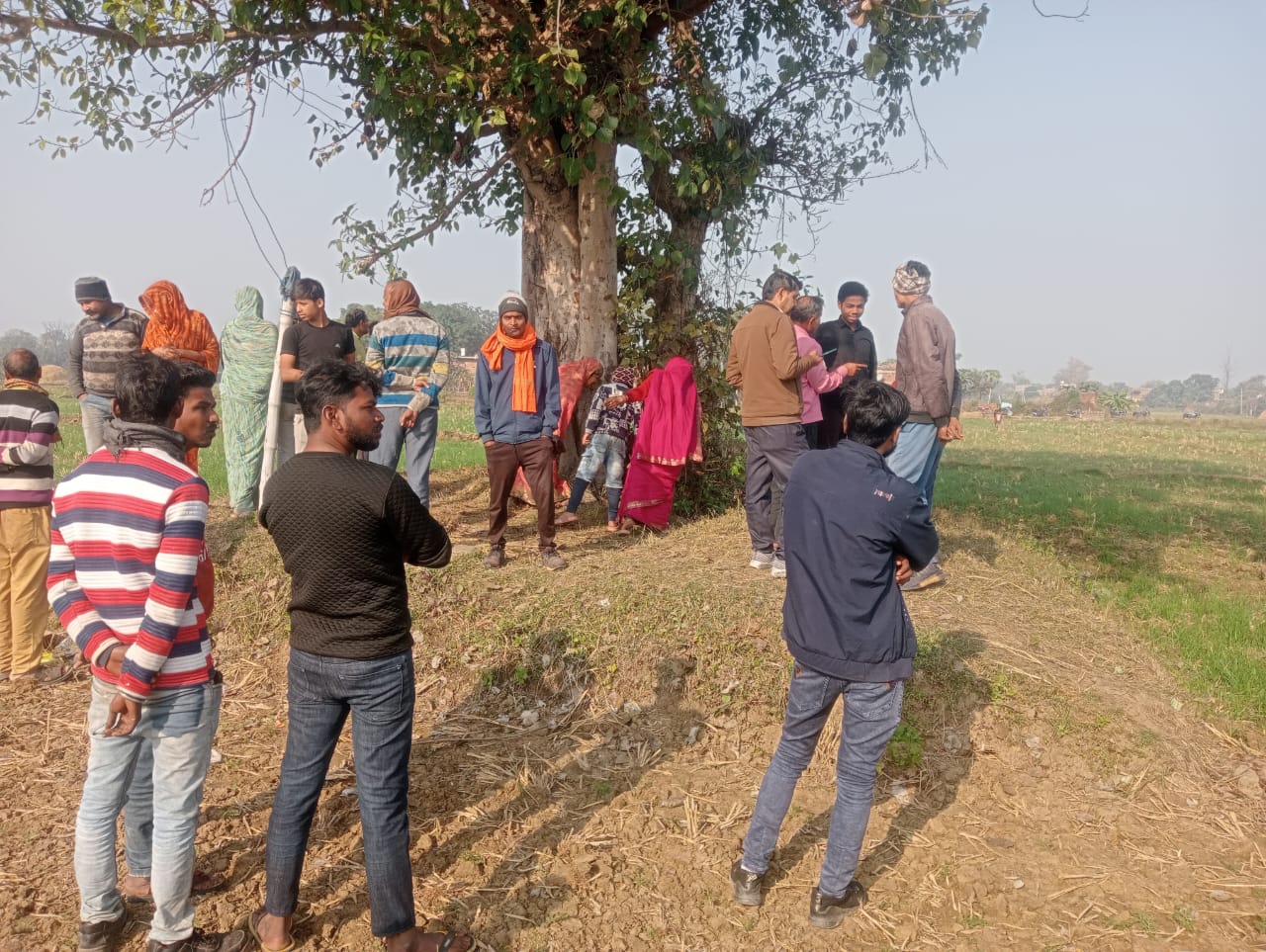 ड्रमंडगंज, मीरजापुर। क्षेत्र के सेमरा कलां गांव के सीवान में स्थित पुराने कुएं में रविवार को चार दिन से गायब हुए अधेड़ व्यक्ति का शव मिलने पर ग्रामीणों में हड़कंप मच गया। सूचना पर पहुंची पुलिस ने ग्रामीणों की मदद से शव को कुएं से बाहर निकलवाया। ग्रामीणों ने शव की शिनाख्त लल्लू उर्फ सिंघाड़ा निवासी अमदह के रूप में की।क्षेत्र के सेमरा कलां गांव में रविवार सुबह खेत की ओर शौच करने गए ग्रामीणों ने कुएं के पास मेड़ पर साइकिल गिरी देखा पास गए तो साइकिल में झोला टंगा हुआ था। ग्रामीणों ने अनहोनी की आशंका को लेकर कुएं में झांककर देखा तो अधेड़ व्यक्ति का शव उतराया हुआ था। ग्रामीणों ने घटना की सूचना ग्राम प्रधान शिव गोविंद चौरसिया को दी। ग्राम प्रधान की सूचना पर पहुंचे थानाध्यक्ष ड्रमंडगंज भारत सुमन, एसआई टीपी सिंह ने घटना की जांच करते हुए कुएं से शव को बाहर निकलवाया। ग्रामीणों ने शव की शिनाख्त अमदह गांव निवासी लल्लू उर्फ सिंघाड़ा के रूप में की। मृतक के एक पैर का चप्पल कुएं से पचास मीटर दूर खेत में मिला वहीं दूसरे पैर का चप्पल कुएं में उतराया मिला। मृतक का मोबाइल फोन नही मिला।पिता का शव कुएं में मिलने पर रोते-बिलखते हुए पहुंची पुत्री सोनी ने बताया कि बीते 8 जनवरी को दोपहर में साठ वर्षीय पिता लल्लू गैस चूल्हा लेने के लिए घर से साइकिल से निकले थे लेकिन उसके बाद घर वापस नही लौटे। गायब पिता की काफी खोजबीन की गई लेकिन कहीं पता नही चलने पर शनिवार को ड्रमंडगंज थाने में तहरीर देकर गुमशुदगी दर्ज कराई थी। फोरेंसिक टीम ने भी घटनास्थल पर पहुंचकर जांच पड़ताल की। पुलिस ने शव को पोस्टमार्टम के लिए भेज दिया है।मृतक मेहनत मजदूरी कर अपना जीविकोपार्जन करता था। मृतक का इकलौता पुत्र नगीना महाराष्ट्र में रहकर मेहनत मजदूरी करता है। पत्नी की दस वर्ष पूर्व मृत्यु हो चुकी है। अधेड़ व्यक्ति का कुएं में शव मिलने पर ग्रामीणों में तरह तरह की चर्चा व्याप्त रही। थानाध्यक्ष भारत सुमन ने बताया कि शव को पोस्टमार्टम के लिए भेज दिया गया है। मृतक सेमरा कलां गांव के कुएं के तक कैसे पहुंचा घटना की जांच की जा रही है। पोस्टमार्टम रिपोर्ट आने के बाद ही मौत के कारणों का स्पष्ट रूप से पता चल सकेगा।
ड्रमंडगंज, मीरजापुर। क्षेत्र के सेमरा कलां गांव के सीवान में स्थित पुराने कुएं में रविवार को चार दिन से गायब हुए अधेड़ व्यक्ति का शव मिलने पर ग्रामीणों में हड़कंप मच गया। सूचना पर पहुंची पुलिस ने ग्रामीणों की मदद से शव को कुएं से बाहर निकलवाया। ग्रामीणों ने शव की शिनाख्त लल्लू उर्फ सिंघाड़ा निवासी अमदह के रूप में की।क्षेत्र के सेमरा कलां गांव में रविवार सुबह खेत की ओर शौच करने गए ग्रामीणों ने कुएं के पास मेड़ पर साइकिल गिरी देखा पास गए तो साइकिल में झोला टंगा हुआ था। ग्रामीणों ने अनहोनी की आशंका को लेकर कुएं में झांककर देखा तो अधेड़ व्यक्ति का शव उतराया हुआ था। ग्रामीणों ने घटना की सूचना ग्राम प्रधान शिव गोविंद चौरसिया को दी। ग्राम प्रधान की सूचना पर पहुंचे थानाध्यक्ष ड्रमंडगंज भारत सुमन, एसआई टीपी सिंह ने घटना की जांच करते हुए कुएं से शव को बाहर निकलवाया। ग्रामीणों ने शव की शिनाख्त अमदह गांव निवासी लल्लू उर्फ सिंघाड़ा के रूप में की। मृतक के एक पैर का चप्पल कुएं से पचास मीटर दूर खेत में मिला वहीं दूसरे पैर का चप्पल कुएं में उतराया मिला। मृतक का मोबाइल फोन नही मिला।पिता का शव कुएं में मिलने पर रोते-बिलखते हुए पहुंची पुत्री सोनी ने बताया कि बीते 8 जनवरी को दोपहर में साठ वर्षीय पिता लल्लू गैस चूल्हा लेने के लिए घर से साइकिल से निकले थे लेकिन उसके बाद घर वापस नही लौटे। गायब पिता की काफी खोजबीन की गई लेकिन कहीं पता नही चलने पर शनिवार को ड्रमंडगंज थाने में तहरीर देकर गुमशुदगी दर्ज कराई थी। फोरेंसिक टीम ने भी घटनास्थल पर पहुंचकर जांच पड़ताल की। पुलिस ने शव को पोस्टमार्टम के लिए भेज दिया है।मृतक मेहनत मजदूरी कर अपना जीविकोपार्जन करता था। मृतक का इकलौता पुत्र नगीना महाराष्ट्र में रहकर मेहनत मजदूरी करता है। पत्नी की दस वर्ष पूर्व मृत्यु हो चुकी है। अधेड़ व्यक्ति का कुएं में शव मिलने पर ग्रामीणों में तरह तरह की चर्चा व्याप्त रही। थानाध्यक्ष भारत सुमन ने बताया कि शव को पोस्टमार्टम के लिए भेज दिया गया है। मृतक सेमरा कलां गांव के कुएं के तक कैसे पहुंचा घटना की जांच की जा रही है। पोस्टमार्टम रिपोर्ट आने के बाद ही मौत के कारणों का स्पष्ट रूप से पता चल सकेगा।
आउटसोर्सिंग नियुक्तियों पर सख्ती
* समाज कल्याण विभाग में होगा अनिवार्य पुलिस व डॉक्यूमेंट वेरिफिकेशन : असीम अरुण
लखनऊ। मुख्यमंत्री अभ्युदय योजना के अंतर्गत कुछ कोर्स कोऑर्डिनेटरों द्वारा फर्जी अभिलेखों के आधार पर नियुक्ति प्राप्त किए जाने के मामले सामने आने के बाद समाज कल्याण राज्यमंत्री (स्वतंत्र प्रभार) असीम अरुण ने कड़ा रुख अपनाया है। उन्होंने समाज कल्याण विभाग में आउटसोर्सिंग से जुड़ी सभी नियुक्तियों के लिए स्पष्ट शासनादेश जारी करने के निर्देश दिए हैं, ताकि भविष्य में किसी भी प्रकार की अनियमितता को रोका जा सके।
राज्यमंत्री ने निर्देशित किया है कि आउटसोर्सिंग के माध्यम से की जाने वाली सभी नियुक्तियां निर्धारित नियमों, मानकों और प्रक्रिया के अनुरूप ही हों। शासनादेश में यह स्पष्ट किया जाएगा कि नियुक्त किए जाने वाले प्रत्येक कर्मचारी के शैक्षिक एवं अन्य आवश्यक दस्तावेजों की पूरी जांच अनिवार्य होगी। इसके साथ ही सभी कार्मिकों का पुलिस वेरिफिकेशन भी कराया जाएगा।
इसके अलावा विभाग में वर्तमान में कार्यरत आउटसोर्सिंग कर्मियों के दस्तावेजों की भी अगले तीन महीनों के भीतर जांच पूरी करने के निर्देश दिए गए हैं, जिससे किसी भी प्रकार की गड़बड़ी की संभावना न रहे।
राज्यमंत्री असीम अरुण ने स्पष्ट शब्दों में कहा कि समाज कल्याण विभाग में किसी भी तरह की अनियमितता स्वीकार नहीं की जाएगी। आउटसोर्सिंग के माध्यम से की जाने वाली सभी नियुक्तियां पूरी तरह पारदर्शी और नियमों के अनुरूप होंगी तथा जहां भी गड़बड़ी पाई जाएगी, वहां सख्त कार्रवाई सुनिश्चित की जाएगी।
उप मुख्यमंत्री केशव प्रसाद मौर्य ने शास्त्री जी की पुण्यतिथि पर अर्पित की श्रद्धांजलि
* डिप्टी सीएम बोले– सादगी और राष्ट्रसेवा की प्रतिमूर्ति थे
लखनऊ। उप मुख्यमंत्री केशव प्रसाद मौर्य ने रविवार को भारत के पूर्व प्रधानमंत्री स्वर्गीय लाल बहादुर शास्त्री जी की पुण्यतिथि के अवसर पर अपने कैम्प कार्यालय, 7-कालिदास मार्ग पर उनके छायाचित्र पर माल्यार्पण व पुष्पांजलि अर्पित कर विनम्र श्रद्धांजलि दी।
इस अवसर पर उप मुख्यमंत्री ने कहा कि शास्त्री जी सादगी, ईमानदारी और राष्ट्रसेवा की प्रतिमूर्ति थे। उनके आदर्श हम सभी को सदैव कर्तव्यपथ पर अग्रसर होने की प्रेरणा देते रहेंगे। उन्होंने कहा कि शास्त्री जी ने आज़ादी की लड़ाई में अग्रणी भूमिका निभाई और स्वतंत्र भारत को सशक्त एवं यशस्वी नेतृत्व प्रदान किया।
श्री मौर्य ने कहा कि शास्त्री जी के ‘जय जवान-जय किसान’ के उद्घोष ने देश को सुरक्षा और आत्मनिर्भरता का मार्ग दिखाया। उन्होंने यह भी कहा कि प्रधानमंत्री श्री नरेंद्र मोदी के नेतृत्व में आत्मनिर्भर भारत और विकसित भारत का संकल्प, शास्त्री जी की दूरदर्शी सोच का ही आधुनिक स्वरूप है।
उप मुख्यमंत्री ने शास्त्री जी की स्मृतियों को नमन करते हुए उनके आदर्शों को आत्मसात करने का आह्वान किया।
Homeo Doctor in Hyderabad for Piles – Natural Healing with Safe and Long-Lasting Homeopathy Care
Consult a trusted homeo doctor in Hyderabad for piles. Get natural, gentle and long-term relief with expert homeopathy treatment.
Introduction: Piles and Its Effect on Your Daily Life
Piles, medically known as hemorrhoids, are swollen and inflamed veins in the anal and rectal region. This condition often leads to pain, itching, bleeding, swelling, and discomfort during bowel movements. Due to changing lifestyle habits, irregular food intake, lack of exercise, and stress, piles have become a common health problem among people of all age groups.
Many individuals ignore piles in the early stages, which can lead to worsening symptoms and complications. If you are looking for a reliable homeo doctor in Hyderabad for piles, homeopathy offers a natural and safe treatment approach that focuses on complete and long-term healing.
Common Symptoms of Piles
Piles can cause a variety of uncomfortable symptoms such as:
- Pain while passing stools
- Bleeding during bowel movements
- Burning and itching sensation in the anal area
- Swelling or lump near the anus
- Difficulty sitting comfortably
- Feeling of incomplete bowel evacuation
These symptoms can affect work, travel, and overall quality of life.
Causes of Piles
The main causes of piles include:
- Chronic constipation or diarrhea
- Excessive straining during bowel movements
- Low-fiber diet
- Inadequate water intake
- Prolonged sitting
- Obesity
- Pregnancy
- Sedentary lifestyle
In cities like Hyderabad, long working hours and unhealthy eating habits significantly increase the risk of piles.
Homeopathy Treatment for Piles
Consulting an experienced homeo doctor in Hyderabad helps manage piles naturally and effectively. Homeopathy works by improving digestion, regulating bowel movements, and strengthening rectal veins, which helps reduce swelling and discomfort.
Benefits of Homeopathy for Piles
- Treats the root cause of piles
- Reduces pain, swelling, and bleeding
- Improves bowel regularity
- Prevents recurrence
- Safe and gentle treatment
- Suitable for long-term use
A skilled homeo doctor in Hyderabad creates a personalized treatment plan based on your symptoms, lifestyle, and overall health condition.
Lifestyle Support with Homeopathy
Along with treatment, a homeo doctor in Hyderabad also advises lifestyle improvements such as:
- Eating fiber-rich foods
- Drinking plenty of water
- Regular physical activity
- Avoiding spicy and junk food
- Maintaining healthy bowel habits
This combined approach ensures faster healing and long-term prevention of piles.
Spiritual Homeopathy – Trusted Piles Care in Hyderabad
Spiritual Homeopathy is a reputed clinic offering natural and effective homeopathy treatment for piles in Hyderabad. The clinic is known for its experienced doctors, patient-friendly care, and holistic healing approach.
Patients receive personalized attention and complete guidance to achieve lasting relief from piles. Spiritual Homeopathy is a preferred choice for people searching for a dependable homeo doctor in Hyderabad.
Conclusion
Piles can be painful and uncomfortable if left untreated. Early diagnosis and homeopathy treatment can prevent complications and provide long-term relief. Homeopathy offers a safe, natural, and non-invasive solution for piles.
If you are looking for an experienced homeo doctor in Hyderabad for piles, choosing the right homeopathy clinic can help you regain comfort and confidence in your daily life.
Call to Action
Take the first step towards natural healing and lasting relief from piles.
झारखंड की वैश्विक छलांग: दावोस के विश्व आर्थिक मंच में पहली बार शामिल होगा राज्य, सीएम हेमन्त सोरेन करेंगे नेतृत्व।
रांची: झारखंड के इतिहास में एक नया अध्याय जुड़ने जा रहा है। राज्य बनने के 25 वर्ष पूरे होने के शुभ अवसर पर, झारखंड पहली बार स्विट्जरलैंड के दावोस में आयोजित होने वाले विश्व आर्थिक मंच (World Economic Forum) की वार्षिक बैठक में भाग लेगा। भारत की ओर से भाग लेने वाले 10 विशिष्ट राज्यों की सूची में झारखंड को शामिल किया गया है, जो राज्य की बदलती आर्थिक प्राथमिकताओं और सुशासन का प्रमाण है।
प्रकृति और प्रगति का संतुलन दावोस में झारखंड की भागीदारी का मुख्य विषय (Theme) “प्रकृति के साथ सामंजस्यपूर्ण विकास” रखा गया है। मुख्यमंत्री हेमन्त सोरेन वैश्विक मंच पर यह संदेश देंगे कि कैसे एक खनिज और वन संपदा से समृद्ध राज्य, पर्यावरण की रक्षा करते हुए औद्योगिक विकास और सामाजिक समानता को बढ़ावा दे रहा है।
इन प्रमुख क्षेत्रों पर होगी चर्चा विश्व आर्थिक सम्मेलन के दौरान झारखंड का प्रतिनिधिमंडल निम्नलिखित विषयों पर केंद्रित सत्रों में भाग लेगा:
इलेक्ट्रिक मोबिलिटी और नवीकरणीय ऊर्जा: राज्य को ग्रीन एनर्जी हब बनाने की दिशा में संवाद।
ऊर्जा सुरक्षा और क्रिटिकल मिनरल्स: झारखंड के प्रचुर खनिज संसाधनों का सतत दोहन।
महिला सशक्तिकरण और जैव-अर्थव्यवस्था: ग्रामीण अर्थव्यवस्था और महिलाओं की आर्थिक भागीदारी को वैश्विक पहचान दिलाना।
खाद्य प्रसंस्करण और पर्यटन: राज्य की समृद्ध संस्कृति और पर्यटन संभावनाओं को निवेशकों के सामने रखना।
वैश्विक साझेदारी का उद्देश्य इस यात्रा का उद्देश्य बहुपक्षीय संस्थानों, निजी क्षेत्र के हितधारकों और विदेशी सरकारों के साथ साझेदारी को मजबूत करना है। मुख्यमंत्री कई द्विपक्षीय बैठकों (Bilateral Meetings) की मेजबानी करेंगे, जिससे राज्य में बड़े पैमाने पर विदेशी निवेश और अत्याधुनिक तकनीक आने की संभावना बढ़ेगी।
Homeopathy Clinic in Hyderabad for Natural and Long-Lasting Relief from Bloating Problems
Looking for a trusted homeopathy clinic in Hyderabad for bloating problems? Get safe, natural, and long-lasting digestive relief with expert care.
Homeopathy Clinic in Hyderabad for Bloating Problems – Natural Digestive Care
Bloating is a common digestive problem that causes discomfort, heaviness, tightness, and a swollen feeling in the abdomen. Many people experience bloating occasionally, but when it becomes frequent, it can disturb daily routines, reduce appetite, affect sleep, and lower overall comfort. If you are suffering from regular digestive discomfort, consulting a reputed homeopathy clinic in Hyderabad can help you achieve long-term relief naturally.
Bloating often creates a feeling of fullness even after eating small meals. It may lead to gas, abdominal pressure, indigestion, and uneasiness throughout the day. Chronic bloating can also affect confidence, productivity, and quality of life. Instead of depending on temporary solutions, choosing a professional homeopathy clinic in Hyderabad ensures a root-cause-based and holistic approach to digestive healing.
Symptoms and Causes of Bloating
Common symptoms of bloating include abdominal swelling, heaviness, fullness after meals, gas, discomfort, indigestion, reduced appetite, and irregular bowel movements. Some people may also experience abdominal tightness and pressure.
Bloating can be caused by poor digestion, irregular eating habits, overeating, eating too fast, food intolerance, lack of physical activity, stress, anxiety, constipation, acidity, hormonal changes, and digestive disorders. When digestion becomes weak or slow, gas builds up in the stomach and intestines, leading to bloating and discomfort.

Homeopathy Treatment for Bloating Problems
A professional homeopathy clinic in Hyderabad treats bloating through a holistic and personalized approach. Homeopathy works by strengthening the digestive system, improving metabolism, regulating gut function, and reducing excessive gas formation naturally.
Homeopathic treatment focuses on the individual’s symptoms, eating habits, lifestyle, emotional health, and medical history. This helps correct the internal imbalance responsible for bloating and digestive discomfort. Homeopathy is gentle, safe, and suitable for all age groups, offering long-term relief without side effects.
With expert guidance from a trusted homeopathy clinic in Hyderabad, patients experience better digestion, improved appetite, reduced abdominal discomfort, and enhanced overall well-being.
Spiritual Homeopathy – Trusted Digestive Care
Spiritual Homeopathy is a well-known and trusted name in holistic healthcare, offering specialized care for digestive disorders such as bloating problems. The clinic follows a patient-centered approach with detailed evaluation and natural treatment planning.
Spiritual Homeopathy aims to strengthen digestive health, restore gut balance, and provide long-lasting relief from bloating and indigestion through safe and effective homeopathic care.
Conclusion
Bloating may seem like a minor issue, but when it becomes frequent, it can disturb your comfort, confidence, and quality of life. Choosing a reputed homeopathy clinic in Hyderabad helps manage bloating naturally by treating the root cause instead of only controlling symptoms.
If you are looking for gentle, effective, and long-term digestive care, homeopathy is the right choice for restoring digestive comfort and overall wellness.
Homeopathy in Hyderabad for Kidney Problems – Natural Healing for Better Kidney Health
Homeopathy in Hyderabad offers natural, safe, and holistic treatment for kidney problems. Improve kidney function, control symptoms, and support long-term kidney health naturally.
Introduction: Kidney Problems and Their Effect on Overall Health
Kidney problems are increasing rapidly due to unhealthy lifestyle habits, stress, diabetes, and high blood pressure. The kidneys play a vital role in filtering waste, balancing fluids, maintaining mineral levels, and controlling blood pressure. When kidney function weakens, toxins start accumulating in the body and may cause serious health complications.
Many patients today rely on homeopathy in Hyderabad for kidney problems because it provides a safe, gentle, and long-term solution. Homeopathy strengthens kidney function naturally and supports the body’s own healing ability without harmful side effects.
Common Symptoms of Kidney Problems
Kidney problems often develop slowly, but some early warning signs include:
- Swelling in legs, ankles, face, or hands
- Frequent urination, especially at night
- Dark, cloudy, or foamy urine
- Lower back pain
- Tiredness and weakness
- Loss of appetite and nausea
- High blood pressure
- Dry and itchy skin
Ignoring these symptoms may lead to chronic kidney disease and long-term complications.
Causes of Kidney Problems
Kidney problems can develop due to several factors such as:
- Diabetes and high blood pressure
- Repeated urinary infections
- Kidney stones
- Dehydration
- Long-term use of painkillers
- Poor diet and lack of exercise
- Smoking and alcohol consumption
- Family history of kidney disease
Early diagnosis and proper treatment are important to prevent permanent kidney damage.
Homeopathy in Hyderabad for Kidney Care
Homeopathy in Hyderabad follows a holistic treatment approach that focuses on correcting the root cause of kidney problems. Instead of suppressing symptoms, homeopathy works to improve kidney function and strengthen the immune system naturally.
Homeopathy treatment supports:
- Better kidney filtration
- Reduced inflammation
- Improved toxin removal
- Enhanced immunity
- Slower disease progression
Each patient receives a personalized treatment plan based on their symptoms, lifestyle, and overall health. This customized care makes homeopathy in Hyderabad a preferred choice for long-term kidney wellness.
Benefits of Homeopathy for Kidney Health
- Natural and gentle treatment
- No harmful side effects
- Suitable for all age groups
- Improves overall well-being
- Helps manage chronic kidney problems
- Supports long-term kidney function
With proper follow-up care and lifestyle guidance, homeopathy helps patients maintain healthy kidneys and better quality of life.
Spiritual Homeopathy – Trusted Kidney Care in Hyderabad
Spiritual Homeopathy is a reputed clinic providing specialized kidney care through homeopathy in Hyderabad. The clinic follows a patient-centered approach and offers customized treatment plans for each individual.
Their experienced doctors focus on:
- Detailed health assessment
- Personalized treatment programs
- Continuous monitoring of progress
- Diet and lifestyle guidance
- Long-term kidney health support
Spiritual Homeopathy is trusted by many patients for ethical practices and consistent treatment results.
Conclusion
Kidney problems can affect daily life and long-term health if not treated on time. Choosing homeopathy in Hyderabad offers a safe, natural, and long-term solution for kidney care. With holistic healing and individualized treatment, homeopathy helps improve kidney function and overall well-being.
Spiritual Homeopathy continues to support patients with expert care and trusted treatment methods.

Call to Action
Protect your kidney health with natural homeopathic care.
गुरुजी की जयंती पर शिक्षा का उजियारा: मुख्यमंत्री ने स्टूडेंट क्रेडिट कार्ड के तहत बांटे 12 करोड़ के ऋण पत्र।
रांची: मुख्यमंत्री श्री हेमन्त सोरेन ने रविवार को दिशोम गुरु शिबू सोरेन की 82वीं जयंती के मौके पर राज्य के नौजवानों के साथ सीधा संवाद किया। मुख्यमंत्री ने कहा कि बाबा (शिबू सोरेन) भले ही आज शारीरिक रूप से हमारे बीच नहीं हैं, लेकिन उनके संघर्ष और विचार झारखंड के हर गरीब, मजदूर और किसान के लिए मार्गदर्शक बने रहेंगे।
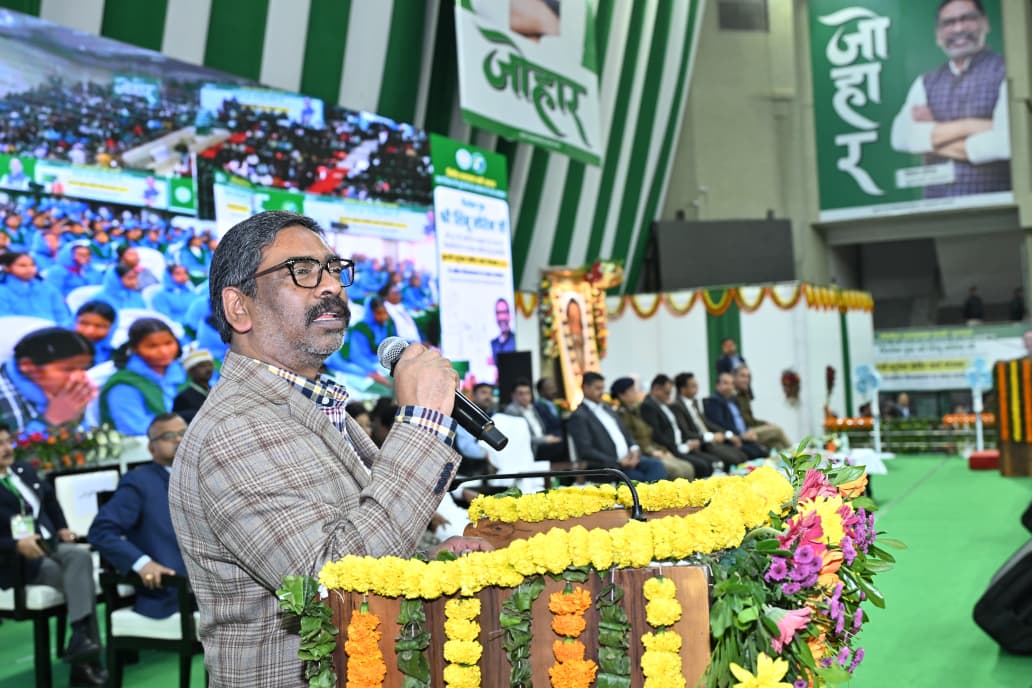
शिक्षा ऋण में झारखंड अव्वल मुख्यमंत्री ने गर्व के साथ बताया कि झारखंड देश का एकमात्र राज्य है जो गुरुजी स्टूडेंट क्रेडिट कार्ड योजना के माध्यम से मात्र 4% के मामूली ब्याज पर 15 लाख रुपये तक का लोन दे रहा है। उन्होंने कहा कि अब आर्थिक तंगी किसी भी बच्चे की पढ़ाई में बाधा नहीं बनेगी।
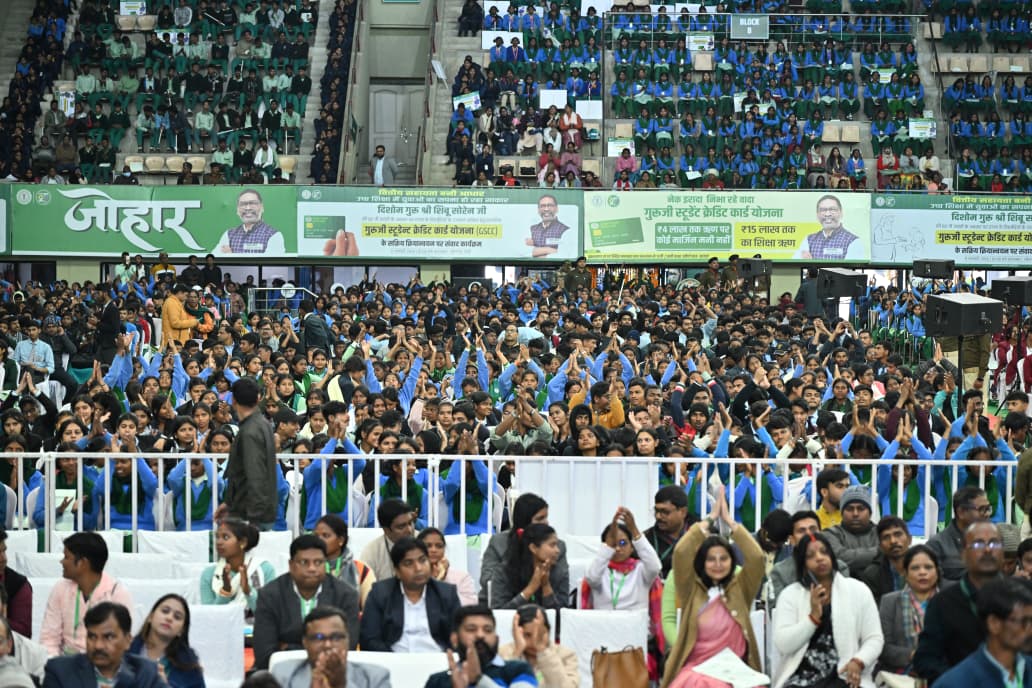
रोजगार नहीं, 'अव्वल' बनाने की तैयारी नौजवानों को संबोधित करते हुए सीएम ने कहा, "हम आपको सिर्फ सरकारी नौकरियों के भरोसे नहीं छोड़ना चाहते। हम आपको इस काबिल बनाना चाहते हैं कि आप दुनिया की किसी भी प्रतिस्पर्धा में खड़े होकर खुद को अव्वल साबित कर सकें।"
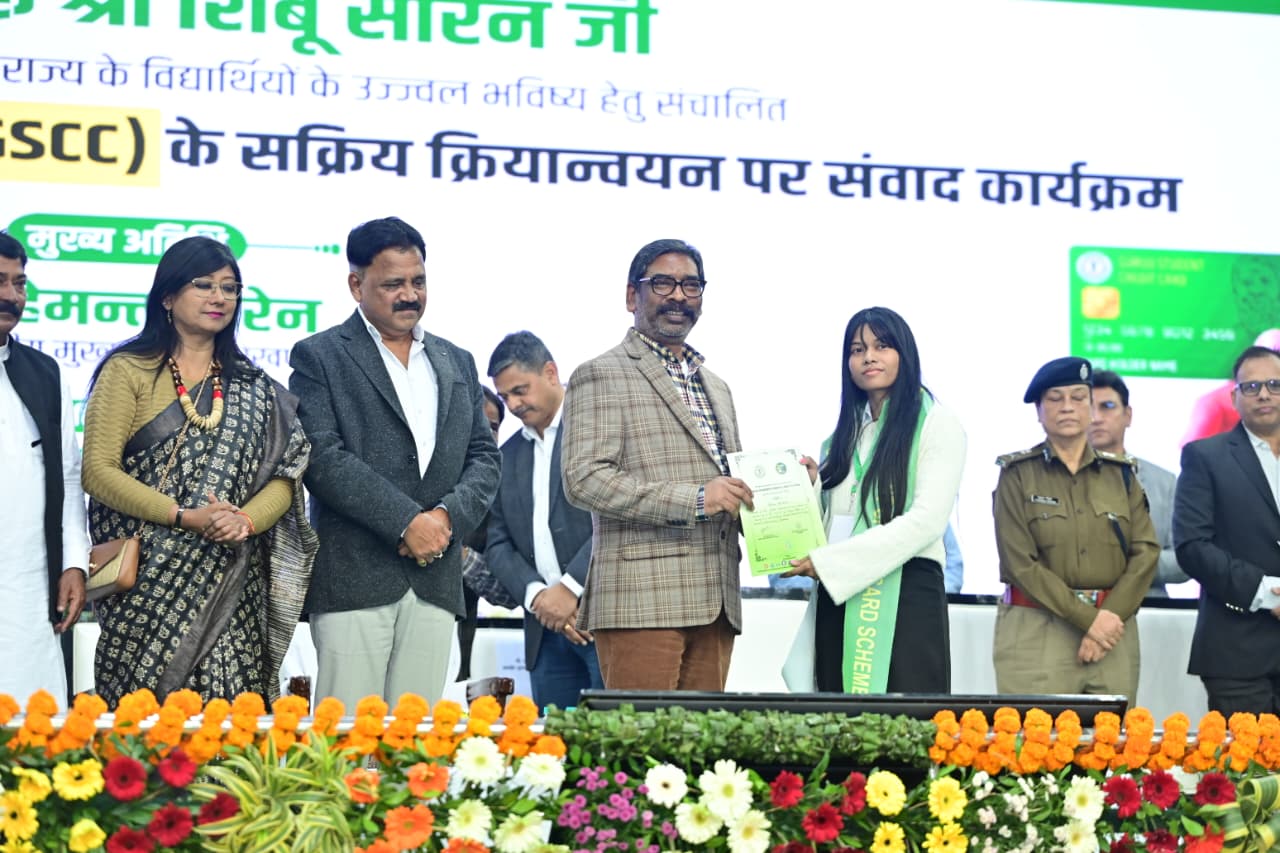
मुख्यमंत्री द्वारा दी गई प्रमुख सौगातें
योजना/सौगात मुख्य विवरण
गुरुजी स्टूडेंट क्रेडिट कार्ड 55 लाभार्थियों को ₹12 करोड़ का ऋण स्वीकृति पत्र। अब तक 2430 छात्र लाभान्वित।
सीएम फैलोशिप योजना 23 रिसर्च स्कॉलर्स को ₹25-25 हजार की स्कॉलरशिप राशि प्रदान की गई।
ग्रास रूट इनोवेशन इंटर्नशिप स्नातक/स्नातकोत्तर के विद्यार्थियों हेतु 17,000 इंटर्नशिप के अवसर और ₹10,000 स्टाइपेंड।
डिजिटल डैशबोर्ड और चैटबोट योजनाओं की जानकारी और सहभागिता बढ़ाने हेतु एआई (AI) आधारित तकनीक का शुभारंभ।
मास्टर सोबरेन मांझी पुस्तकालय बोकारो में अत्याधुनिक पुस्तकालय और गुरुजी रात्रि पाठशाला की शुरुआत।
नवाचार: विलेज नॉलेज रजिस्टर (Village Knowledge Register)
मुख्यमंत्री ने "द ग्रास रूट इनोवेशन इंटर्नशिप स्कीम" की शुरुआत की। इसके तहत 4-4 विद्यार्थियों की टीम राज्य की 4345 पंचायतों में जाएगी। ये विद्यार्थी स्थानीय नवाचार (Innovation), पारंपरिक ज्ञान और हस्तकला की पहचान कर उसे डिजिटल 'विलेज नॉलेज रजिस्टर' में दर्ज करेंगे, ताकि झारखंड की धरोहर को सुरक्षित रखा जा सके।
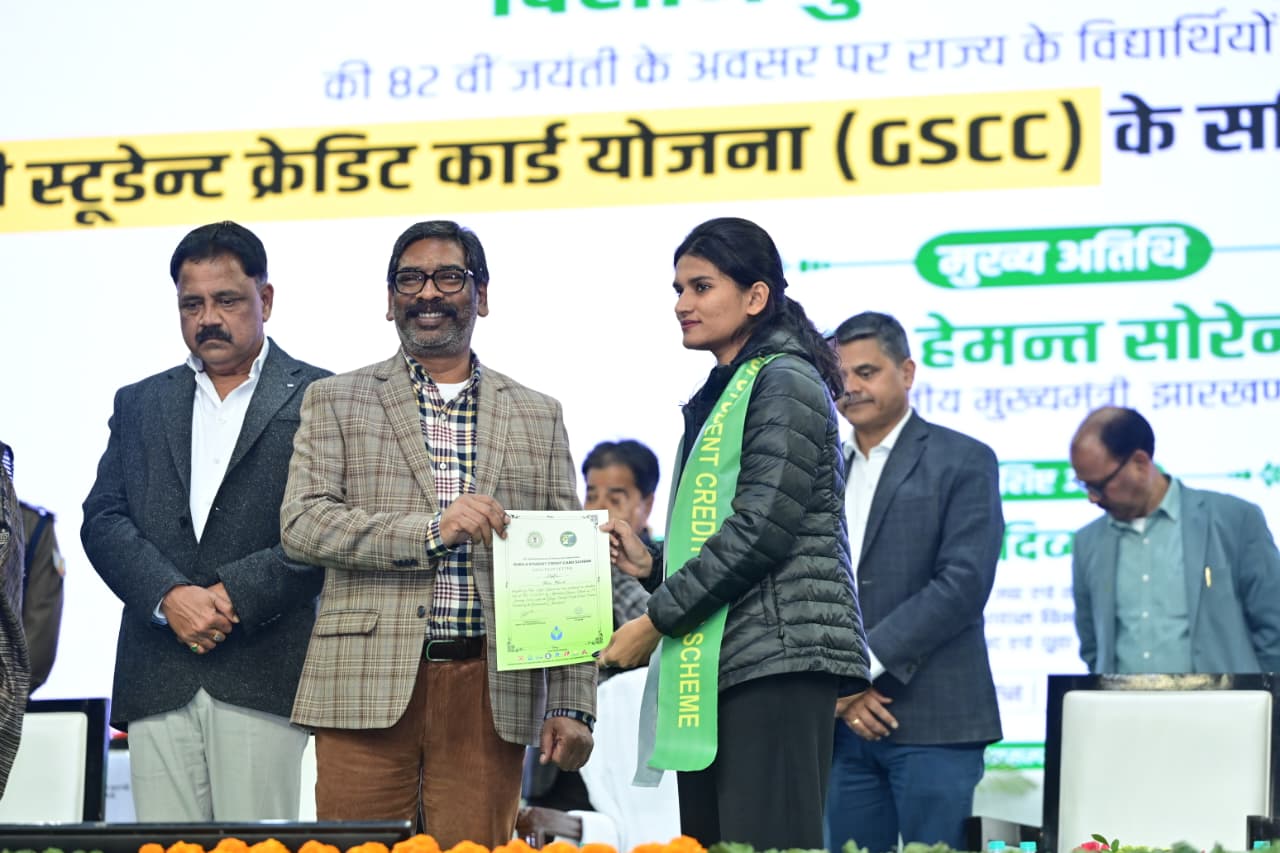
आजमगढ़ : पल्थी में धूमधाम से मनाई गई डाक्टर काउंट सीजर मैटी की जयंती

पृथ्वीराज सिंह
दीदारगंज (आजमगढ़ )। दीदारगंज क्षेत्र के पल्थी बाजार में डॉ. काउंट सीजर मैटी की 217वीं जयंती बड़े ही धूमधाम से मनाई गई।इस अवसर पर कार्यक्रम के मुख्य अतिथि डॉ देवी प्रसाद पुष्पजीवी व उपस्थित लोगों ने डॉ. काउंट सीजर मैटी के चित्र पर माल्यार्पण किया इसके बाद मुख्य अतिथि के हाथों केक काटकर कार्यक्रम का शुभारम्भ किया गया। इस अवसर पर मुख्य अतिथि ने डॉ. काउंट सीजर मैटी के जीवन पर प्रकाश डाला और कहा कि मैटी का जन्म इटली के बोलोग्ना शहर में एक जमींदार परिवार में 11जनवरी 1809 ई0 में हुआ था उन्होंने वनस्पतियों के द्वारा इलेक्ट्रो होम्योपैथी चिकित्सा पद्धति का आविष्कार किया।इस अवसर पर मुख्य अतिथि का फूलमालाओं से स्वागत किया गया। उपस्थित लोगों ने भी काउंट सीजर मैटी के जीवन पर प्रकाश डाला।
इस अवसर पर डॉ. एस एन राय, डॉ. वीर आभिमन्यु, डॉ. राय, डॉ पृथ्वी राज सिंह, डॉ. राम हरख चौहान, डॉ.विद्या सागर आदि उपस्थित थे।
ट्रक की चपेट में आने से कपड़ा व्यवसायी की मौत

* 500 मीटर दूर तक बाइक को घसीटते हुए मक्का लदा ट्रक डिवाइडर में टकराया
ड्रमंडगंज, मीरजापुर। क्षेत्र के मीरजापुर रीवा राष्ट्रीय राजमार्ग स्थित ड्रमंडगंज घाटी में मक्का लादकर जा रहा ट्रक बाइक सवार कपड़ा व्यवसायी को कुचलते हुए सीमेंट लदे ट्रक से टकराते हुए डिवाइडर में जाकर भिड़ गया।प्रयागराज जिले के कोरांव थाना क्षेत्र के सैंभा गांव निवासी कपड़ा व्यवसायी 40 वर्षीय संजय सिंह कुशवाहा बाइक से मध्यप्रदेश के हनुमना में कपड़ा पहुंचाने गए थे। कपड़ा पहुंचाने के बाद दोपहर में घर वापस लौट रहे थे। जैसे ही ड्रमंडगंज घाटी के जालिम मोड़ के आगे पहुंचे तो पीछे से मक्का लादकर मीरजापुर की ओर जा रहा ट्रक बाइक चालक को टक्कर मार दिया। बाइक चालक को रौंदते हुए अनियंत्रित ट्रक बाइक को घसीटते हुए आधा किलोमीटर दूर तक ले गई।ट्रक चालक तेज रफ्तार में होने के चलते जैसे ही बड़का मोड़ घुमान के पास पहुंचा तो आगे चल रहे सीमेंट लदे ट्रक से टकराते हुए डिवाइडर में जाकर भिड़ गया। ट्रक चालक मौके से फरार हो गया। सूचना पर पहुंचे एसआई शिवाकांत पांडेय, सुभाष यादव,राम विशाल मौके पर पहुंचे और घटना की जांच करते हुए मृत कपड़ा व्यवसायी के स्वजनों को सूचना दी। सूचना पाकर रोते-बिलखते हुए पहुंचे मृतक के बड़े भाई अजय सिंह कुशवाहा ने बताया कि छोटा भाई साथ में कपड़े का कारोबार करता था।मध्यप्रदेश के हनुमना में लोवर टी-शर्ट पहुंचाने गया था कि घर वापस लौटते समय ट्रक के कुचलने से मौत हो गई। मृतक दो भाइयों में छोटा था। मृतक को तीन पुत्री और एक पुत्र है। पत्नी आशा देवी का रो रोकर बुरा हाल है। मौके पर मौजूद एसआई शिवाकांत पांडेय ने बताया कि अनियंत्रित ट्रक की चपेट में आने से प्रयागराज जिला निवासी कपड़ा व्यवसायी की मृत्यु हो गई है। शव को पोस्टमार्टम के लिए भेज दिया गया है।फरार ट्रक चालक की तलाश की जा रही है।
घर से 4 किमी दूर कुएं में उतराया मिला गायब अधेड़ का शव, परिजनों ने जताई हत्या की आशंका
 ड्रमंडगंज, मीरजापुर। क्षेत्र के सेमरा कलां गांव के सीवान में स्थित पुराने कुएं में रविवार को चार दिन से गायब हुए अधेड़ व्यक्ति का शव मिलने पर ग्रामीणों में हड़कंप मच गया। सूचना पर पहुंची पुलिस ने ग्रामीणों की मदद से शव को कुएं से बाहर निकलवाया। ग्रामीणों ने शव की शिनाख्त लल्लू उर्फ सिंघाड़ा निवासी अमदह के रूप में की।क्षेत्र के सेमरा कलां गांव में रविवार सुबह खेत की ओर शौच करने गए ग्रामीणों ने कुएं के पास मेड़ पर साइकिल गिरी देखा पास गए तो साइकिल में झोला टंगा हुआ था। ग्रामीणों ने अनहोनी की आशंका को लेकर कुएं में झांककर देखा तो अधेड़ व्यक्ति का शव उतराया हुआ था। ग्रामीणों ने घटना की सूचना ग्राम प्रधान शिव गोविंद चौरसिया को दी। ग्राम प्रधान की सूचना पर पहुंचे थानाध्यक्ष ड्रमंडगंज भारत सुमन, एसआई टीपी सिंह ने घटना की जांच करते हुए कुएं से शव को बाहर निकलवाया। ग्रामीणों ने शव की शिनाख्त अमदह गांव निवासी लल्लू उर्फ सिंघाड़ा के रूप में की। मृतक के एक पैर का चप्पल कुएं से पचास मीटर दूर खेत में मिला वहीं दूसरे पैर का चप्पल कुएं में उतराया मिला। मृतक का मोबाइल फोन नही मिला।पिता का शव कुएं में मिलने पर रोते-बिलखते हुए पहुंची पुत्री सोनी ने बताया कि बीते 8 जनवरी को दोपहर में साठ वर्षीय पिता लल्लू गैस चूल्हा लेने के लिए घर से साइकिल से निकले थे लेकिन उसके बाद घर वापस नही लौटे। गायब पिता की काफी खोजबीन की गई लेकिन कहीं पता नही चलने पर शनिवार को ड्रमंडगंज थाने में तहरीर देकर गुमशुदगी दर्ज कराई थी। फोरेंसिक टीम ने भी घटनास्थल पर पहुंचकर जांच पड़ताल की। पुलिस ने शव को पोस्टमार्टम के लिए भेज दिया है।मृतक मेहनत मजदूरी कर अपना जीविकोपार्जन करता था। मृतक का इकलौता पुत्र नगीना महाराष्ट्र में रहकर मेहनत मजदूरी करता है। पत्नी की दस वर्ष पूर्व मृत्यु हो चुकी है। अधेड़ व्यक्ति का कुएं में शव मिलने पर ग्रामीणों में तरह तरह की चर्चा व्याप्त रही। थानाध्यक्ष भारत सुमन ने बताया कि शव को पोस्टमार्टम के लिए भेज दिया गया है। मृतक सेमरा कलां गांव के कुएं के तक कैसे पहुंचा घटना की जांच की जा रही है। पोस्टमार्टम रिपोर्ट आने के बाद ही मौत के कारणों का स्पष्ट रूप से पता चल सकेगा।
ड्रमंडगंज, मीरजापुर। क्षेत्र के सेमरा कलां गांव के सीवान में स्थित पुराने कुएं में रविवार को चार दिन से गायब हुए अधेड़ व्यक्ति का शव मिलने पर ग्रामीणों में हड़कंप मच गया। सूचना पर पहुंची पुलिस ने ग्रामीणों की मदद से शव को कुएं से बाहर निकलवाया। ग्रामीणों ने शव की शिनाख्त लल्लू उर्फ सिंघाड़ा निवासी अमदह के रूप में की।क्षेत्र के सेमरा कलां गांव में रविवार सुबह खेत की ओर शौच करने गए ग्रामीणों ने कुएं के पास मेड़ पर साइकिल गिरी देखा पास गए तो साइकिल में झोला टंगा हुआ था। ग्रामीणों ने अनहोनी की आशंका को लेकर कुएं में झांककर देखा तो अधेड़ व्यक्ति का शव उतराया हुआ था। ग्रामीणों ने घटना की सूचना ग्राम प्रधान शिव गोविंद चौरसिया को दी। ग्राम प्रधान की सूचना पर पहुंचे थानाध्यक्ष ड्रमंडगंज भारत सुमन, एसआई टीपी सिंह ने घटना की जांच करते हुए कुएं से शव को बाहर निकलवाया। ग्रामीणों ने शव की शिनाख्त अमदह गांव निवासी लल्लू उर्फ सिंघाड़ा के रूप में की। मृतक के एक पैर का चप्पल कुएं से पचास मीटर दूर खेत में मिला वहीं दूसरे पैर का चप्पल कुएं में उतराया मिला। मृतक का मोबाइल फोन नही मिला।पिता का शव कुएं में मिलने पर रोते-बिलखते हुए पहुंची पुत्री सोनी ने बताया कि बीते 8 जनवरी को दोपहर में साठ वर्षीय पिता लल्लू गैस चूल्हा लेने के लिए घर से साइकिल से निकले थे लेकिन उसके बाद घर वापस नही लौटे। गायब पिता की काफी खोजबीन की गई लेकिन कहीं पता नही चलने पर शनिवार को ड्रमंडगंज थाने में तहरीर देकर गुमशुदगी दर्ज कराई थी। फोरेंसिक टीम ने भी घटनास्थल पर पहुंचकर जांच पड़ताल की। पुलिस ने शव को पोस्टमार्टम के लिए भेज दिया है।मृतक मेहनत मजदूरी कर अपना जीविकोपार्जन करता था। मृतक का इकलौता पुत्र नगीना महाराष्ट्र में रहकर मेहनत मजदूरी करता है। पत्नी की दस वर्ष पूर्व मृत्यु हो चुकी है। अधेड़ व्यक्ति का कुएं में शव मिलने पर ग्रामीणों में तरह तरह की चर्चा व्याप्त रही। थानाध्यक्ष भारत सुमन ने बताया कि शव को पोस्टमार्टम के लिए भेज दिया गया है। मृतक सेमरा कलां गांव के कुएं के तक कैसे पहुंचा घटना की जांच की जा रही है। पोस्टमार्टम रिपोर्ट आने के बाद ही मौत के कारणों का स्पष्ट रूप से पता चल सकेगा।
आउटसोर्सिंग नियुक्तियों पर सख्ती
* समाज कल्याण विभाग में होगा अनिवार्य पुलिस व डॉक्यूमेंट वेरिफिकेशन : असीम अरुण
लखनऊ। मुख्यमंत्री अभ्युदय योजना के अंतर्गत कुछ कोर्स कोऑर्डिनेटरों द्वारा फर्जी अभिलेखों के आधार पर नियुक्ति प्राप्त किए जाने के मामले सामने आने के बाद समाज कल्याण राज्यमंत्री (स्वतंत्र प्रभार) असीम अरुण ने कड़ा रुख अपनाया है। उन्होंने समाज कल्याण विभाग में आउटसोर्सिंग से जुड़ी सभी नियुक्तियों के लिए स्पष्ट शासनादेश जारी करने के निर्देश दिए हैं, ताकि भविष्य में किसी भी प्रकार की अनियमितता को रोका जा सके।
राज्यमंत्री ने निर्देशित किया है कि आउटसोर्सिंग के माध्यम से की जाने वाली सभी नियुक्तियां निर्धारित नियमों, मानकों और प्रक्रिया के अनुरूप ही हों। शासनादेश में यह स्पष्ट किया जाएगा कि नियुक्त किए जाने वाले प्रत्येक कर्मचारी के शैक्षिक एवं अन्य आवश्यक दस्तावेजों की पूरी जांच अनिवार्य होगी। इसके साथ ही सभी कार्मिकों का पुलिस वेरिफिकेशन भी कराया जाएगा।
इसके अलावा विभाग में वर्तमान में कार्यरत आउटसोर्सिंग कर्मियों के दस्तावेजों की भी अगले तीन महीनों के भीतर जांच पूरी करने के निर्देश दिए गए हैं, जिससे किसी भी प्रकार की गड़बड़ी की संभावना न रहे।
राज्यमंत्री असीम अरुण ने स्पष्ट शब्दों में कहा कि समाज कल्याण विभाग में किसी भी तरह की अनियमितता स्वीकार नहीं की जाएगी। आउटसोर्सिंग के माध्यम से की जाने वाली सभी नियुक्तियां पूरी तरह पारदर्शी और नियमों के अनुरूप होंगी तथा जहां भी गड़बड़ी पाई जाएगी, वहां सख्त कार्रवाई सुनिश्चित की जाएगी।
उप मुख्यमंत्री केशव प्रसाद मौर्य ने शास्त्री जी की पुण्यतिथि पर अर्पित की श्रद्धांजलि
* डिप्टी सीएम बोले– सादगी और राष्ट्रसेवा की प्रतिमूर्ति थे
लखनऊ। उप मुख्यमंत्री केशव प्रसाद मौर्य ने रविवार को भारत के पूर्व प्रधानमंत्री स्वर्गीय लाल बहादुर शास्त्री जी की पुण्यतिथि के अवसर पर अपने कैम्प कार्यालय, 7-कालिदास मार्ग पर उनके छायाचित्र पर माल्यार्पण व पुष्पांजलि अर्पित कर विनम्र श्रद्धांजलि दी।
इस अवसर पर उप मुख्यमंत्री ने कहा कि शास्त्री जी सादगी, ईमानदारी और राष्ट्रसेवा की प्रतिमूर्ति थे। उनके आदर्श हम सभी को सदैव कर्तव्यपथ पर अग्रसर होने की प्रेरणा देते रहेंगे। उन्होंने कहा कि शास्त्री जी ने आज़ादी की लड़ाई में अग्रणी भूमिका निभाई और स्वतंत्र भारत को सशक्त एवं यशस्वी नेतृत्व प्रदान किया।
श्री मौर्य ने कहा कि शास्त्री जी के ‘जय जवान-जय किसान’ के उद्घोष ने देश को सुरक्षा और आत्मनिर्भरता का मार्ग दिखाया। उन्होंने यह भी कहा कि प्रधानमंत्री श्री नरेंद्र मोदी के नेतृत्व में आत्मनिर्भर भारत और विकसित भारत का संकल्प, शास्त्री जी की दूरदर्शी सोच का ही आधुनिक स्वरूप है।
उप मुख्यमंत्री ने शास्त्री जी की स्मृतियों को नमन करते हुए उनके आदर्शों को आत्मसात करने का आह्वान किया।
Homeo Doctor in Hyderabad for Piles – Natural Healing with Safe and Long-Lasting Homeopathy Care
Consult a trusted homeo doctor in Hyderabad for piles. Get natural, gentle and long-term relief with expert homeopathy treatment.
Introduction: Piles and Its Effect on Your Daily Life
Piles, medically known as hemorrhoids, are swollen and inflamed veins in the anal and rectal region. This condition often leads to pain, itching, bleeding, swelling, and discomfort during bowel movements. Due to changing lifestyle habits, irregular food intake, lack of exercise, and stress, piles have become a common health problem among people of all age groups.
Many individuals ignore piles in the early stages, which can lead to worsening symptoms and complications. If you are looking for a reliable homeo doctor in Hyderabad for piles, homeopathy offers a natural and safe treatment approach that focuses on complete and long-term healing.
Common Symptoms of Piles
Piles can cause a variety of uncomfortable symptoms such as:
- Pain while passing stools
- Bleeding during bowel movements
- Burning and itching sensation in the anal area
- Swelling or lump near the anus
- Difficulty sitting comfortably
- Feeling of incomplete bowel evacuation
These symptoms can affect work, travel, and overall quality of life.
Causes of Piles
The main causes of piles include:
- Chronic constipation or diarrhea
- Excessive straining during bowel movements
- Low-fiber diet
- Inadequate water intake
- Prolonged sitting
- Obesity
- Pregnancy
- Sedentary lifestyle
In cities like Hyderabad, long working hours and unhealthy eating habits significantly increase the risk of piles.
Homeopathy Treatment for Piles
Consulting an experienced homeo doctor in Hyderabad helps manage piles naturally and effectively. Homeopathy works by improving digestion, regulating bowel movements, and strengthening rectal veins, which helps reduce swelling and discomfort.
Benefits of Homeopathy for Piles
- Treats the root cause of piles
- Reduces pain, swelling, and bleeding
- Improves bowel regularity
- Prevents recurrence
- Safe and gentle treatment
- Suitable for long-term use
A skilled homeo doctor in Hyderabad creates a personalized treatment plan based on your symptoms, lifestyle, and overall health condition.
Lifestyle Support with Homeopathy
Along with treatment, a homeo doctor in Hyderabad also advises lifestyle improvements such as:
- Eating fiber-rich foods
- Drinking plenty of water
- Regular physical activity
- Avoiding spicy and junk food
- Maintaining healthy bowel habits
This combined approach ensures faster healing and long-term prevention of piles.
Spiritual Homeopathy – Trusted Piles Care in Hyderabad
Spiritual Homeopathy is a reputed clinic offering natural and effective homeopathy treatment for piles in Hyderabad. The clinic is known for its experienced doctors, patient-friendly care, and holistic healing approach.
Patients receive personalized attention and complete guidance to achieve lasting relief from piles. Spiritual Homeopathy is a preferred choice for people searching for a dependable homeo doctor in Hyderabad.
Conclusion
Piles can be painful and uncomfortable if left untreated. Early diagnosis and homeopathy treatment can prevent complications and provide long-term relief. Homeopathy offers a safe, natural, and non-invasive solution for piles.
If you are looking for an experienced homeo doctor in Hyderabad for piles, choosing the right homeopathy clinic can help you regain comfort and confidence in your daily life.
Call to Action
Take the first step towards natural healing and lasting relief from piles.
झारखंड की वैश्विक छलांग: दावोस के विश्व आर्थिक मंच में पहली बार शामिल होगा राज्य, सीएम हेमन्त सोरेन करेंगे नेतृत्व।
रांची: झारखंड के इतिहास में एक नया अध्याय जुड़ने जा रहा है। राज्य बनने के 25 वर्ष पूरे होने के शुभ अवसर पर, झारखंड पहली बार स्विट्जरलैंड के दावोस में आयोजित होने वाले विश्व आर्थिक मंच (World Economic Forum) की वार्षिक बैठक में भाग लेगा। भारत की ओर से भाग लेने वाले 10 विशिष्ट राज्यों की सूची में झारखंड को शामिल किया गया है, जो राज्य की बदलती आर्थिक प्राथमिकताओं और सुशासन का प्रमाण है।
प्रकृति और प्रगति का संतुलन दावोस में झारखंड की भागीदारी का मुख्य विषय (Theme) “प्रकृति के साथ सामंजस्यपूर्ण विकास” रखा गया है। मुख्यमंत्री हेमन्त सोरेन वैश्विक मंच पर यह संदेश देंगे कि कैसे एक खनिज और वन संपदा से समृद्ध राज्य, पर्यावरण की रक्षा करते हुए औद्योगिक विकास और सामाजिक समानता को बढ़ावा दे रहा है।
इन प्रमुख क्षेत्रों पर होगी चर्चा विश्व आर्थिक सम्मेलन के दौरान झारखंड का प्रतिनिधिमंडल निम्नलिखित विषयों पर केंद्रित सत्रों में भाग लेगा:
इलेक्ट्रिक मोबिलिटी और नवीकरणीय ऊर्जा: राज्य को ग्रीन एनर्जी हब बनाने की दिशा में संवाद।
ऊर्जा सुरक्षा और क्रिटिकल मिनरल्स: झारखंड के प्रचुर खनिज संसाधनों का सतत दोहन।
महिला सशक्तिकरण और जैव-अर्थव्यवस्था: ग्रामीण अर्थव्यवस्था और महिलाओं की आर्थिक भागीदारी को वैश्विक पहचान दिलाना।
खाद्य प्रसंस्करण और पर्यटन: राज्य की समृद्ध संस्कृति और पर्यटन संभावनाओं को निवेशकों के सामने रखना।
वैश्विक साझेदारी का उद्देश्य इस यात्रा का उद्देश्य बहुपक्षीय संस्थानों, निजी क्षेत्र के हितधारकों और विदेशी सरकारों के साथ साझेदारी को मजबूत करना है। मुख्यमंत्री कई द्विपक्षीय बैठकों (Bilateral Meetings) की मेजबानी करेंगे, जिससे राज्य में बड़े पैमाने पर विदेशी निवेश और अत्याधुनिक तकनीक आने की संभावना बढ़ेगी।
Homeopathy Clinic in Hyderabad for Natural and Long-Lasting Relief from Bloating Problems
Looking for a trusted homeopathy clinic in Hyderabad for bloating problems? Get safe, natural, and long-lasting digestive relief with expert care.
Homeopathy Clinic in Hyderabad for Bloating Problems – Natural Digestive Care
Bloating is a common digestive problem that causes discomfort, heaviness, tightness, and a swollen feeling in the abdomen. Many people experience bloating occasionally, but when it becomes frequent, it can disturb daily routines, reduce appetite, affect sleep, and lower overall comfort. If you are suffering from regular digestive discomfort, consulting a reputed homeopathy clinic in Hyderabad can help you achieve long-term relief naturally.
Bloating often creates a feeling of fullness even after eating small meals. It may lead to gas, abdominal pressure, indigestion, and uneasiness throughout the day. Chronic bloating can also affect confidence, productivity, and quality of life. Instead of depending on temporary solutions, choosing a professional homeopathy clinic in Hyderabad ensures a root-cause-based and holistic approach to digestive healing.
Symptoms and Causes of Bloating
Common symptoms of bloating include abdominal swelling, heaviness, fullness after meals, gas, discomfort, indigestion, reduced appetite, and irregular bowel movements. Some people may also experience abdominal tightness and pressure.
Bloating can be caused by poor digestion, irregular eating habits, overeating, eating too fast, food intolerance, lack of physical activity, stress, anxiety, constipation, acidity, hormonal changes, and digestive disorders. When digestion becomes weak or slow, gas builds up in the stomach and intestines, leading to bloating and discomfort.

Homeopathy Treatment for Bloating Problems
A professional homeopathy clinic in Hyderabad treats bloating through a holistic and personalized approach. Homeopathy works by strengthening the digestive system, improving metabolism, regulating gut function, and reducing excessive gas formation naturally.
Homeopathic treatment focuses on the individual’s symptoms, eating habits, lifestyle, emotional health, and medical history. This helps correct the internal imbalance responsible for bloating and digestive discomfort. Homeopathy is gentle, safe, and suitable for all age groups, offering long-term relief without side effects.
With expert guidance from a trusted homeopathy clinic in Hyderabad, patients experience better digestion, improved appetite, reduced abdominal discomfort, and enhanced overall well-being.
Spiritual Homeopathy – Trusted Digestive Care
Spiritual Homeopathy is a well-known and trusted name in holistic healthcare, offering specialized care for digestive disorders such as bloating problems. The clinic follows a patient-centered approach with detailed evaluation and natural treatment planning.
Spiritual Homeopathy aims to strengthen digestive health, restore gut balance, and provide long-lasting relief from bloating and indigestion through safe and effective homeopathic care.
Conclusion
Bloating may seem like a minor issue, but when it becomes frequent, it can disturb your comfort, confidence, and quality of life. Choosing a reputed homeopathy clinic in Hyderabad helps manage bloating naturally by treating the root cause instead of only controlling symptoms.
If you are looking for gentle, effective, and long-term digestive care, homeopathy is the right choice for restoring digestive comfort and overall wellness.
Homeopathy in Hyderabad for Kidney Problems – Natural Healing for Better Kidney Health
Homeopathy in Hyderabad offers natural, safe, and holistic treatment for kidney problems. Improve kidney function, control symptoms, and support long-term kidney health naturally.
Introduction: Kidney Problems and Their Effect on Overall Health
Kidney problems are increasing rapidly due to unhealthy lifestyle habits, stress, diabetes, and high blood pressure. The kidneys play a vital role in filtering waste, balancing fluids, maintaining mineral levels, and controlling blood pressure. When kidney function weakens, toxins start accumulating in the body and may cause serious health complications.
Many patients today rely on homeopathy in Hyderabad for kidney problems because it provides a safe, gentle, and long-term solution. Homeopathy strengthens kidney function naturally and supports the body’s own healing ability without harmful side effects.
Common Symptoms of Kidney Problems
Kidney problems often develop slowly, but some early warning signs include:
- Swelling in legs, ankles, face, or hands
- Frequent urination, especially at night
- Dark, cloudy, or foamy urine
- Lower back pain
- Tiredness and weakness
- Loss of appetite and nausea
- High blood pressure
- Dry and itchy skin
Ignoring these symptoms may lead to chronic kidney disease and long-term complications.
Causes of Kidney Problems
Kidney problems can develop due to several factors such as:
- Diabetes and high blood pressure
- Repeated urinary infections
- Kidney stones
- Dehydration
- Long-term use of painkillers
- Poor diet and lack of exercise
- Smoking and alcohol consumption
- Family history of kidney disease
Early diagnosis and proper treatment are important to prevent permanent kidney damage.
Homeopathy in Hyderabad for Kidney Care
Homeopathy in Hyderabad follows a holistic treatment approach that focuses on correcting the root cause of kidney problems. Instead of suppressing symptoms, homeopathy works to improve kidney function and strengthen the immune system naturally.
Homeopathy treatment supports:
- Better kidney filtration
- Reduced inflammation
- Improved toxin removal
- Enhanced immunity
- Slower disease progression
Each patient receives a personalized treatment plan based on their symptoms, lifestyle, and overall health. This customized care makes homeopathy in Hyderabad a preferred choice for long-term kidney wellness.
Benefits of Homeopathy for Kidney Health
- Natural and gentle treatment
- No harmful side effects
- Suitable for all age groups
- Improves overall well-being
- Helps manage chronic kidney problems
- Supports long-term kidney function
With proper follow-up care and lifestyle guidance, homeopathy helps patients maintain healthy kidneys and better quality of life.
Spiritual Homeopathy – Trusted Kidney Care in Hyderabad
Spiritual Homeopathy is a reputed clinic providing specialized kidney care through homeopathy in Hyderabad. The clinic follows a patient-centered approach and offers customized treatment plans for each individual.
Their experienced doctors focus on:
- Detailed health assessment
- Personalized treatment programs
- Continuous monitoring of progress
- Diet and lifestyle guidance
- Long-term kidney health support
Spiritual Homeopathy is trusted by many patients for ethical practices and consistent treatment results.
Conclusion
Kidney problems can affect daily life and long-term health if not treated on time. Choosing homeopathy in Hyderabad offers a safe, natural, and long-term solution for kidney care. With holistic healing and individualized treatment, homeopathy helps improve kidney function and overall well-being.
Spiritual Homeopathy continues to support patients with expert care and trusted treatment methods.

Call to Action
Protect your kidney health with natural homeopathic care.




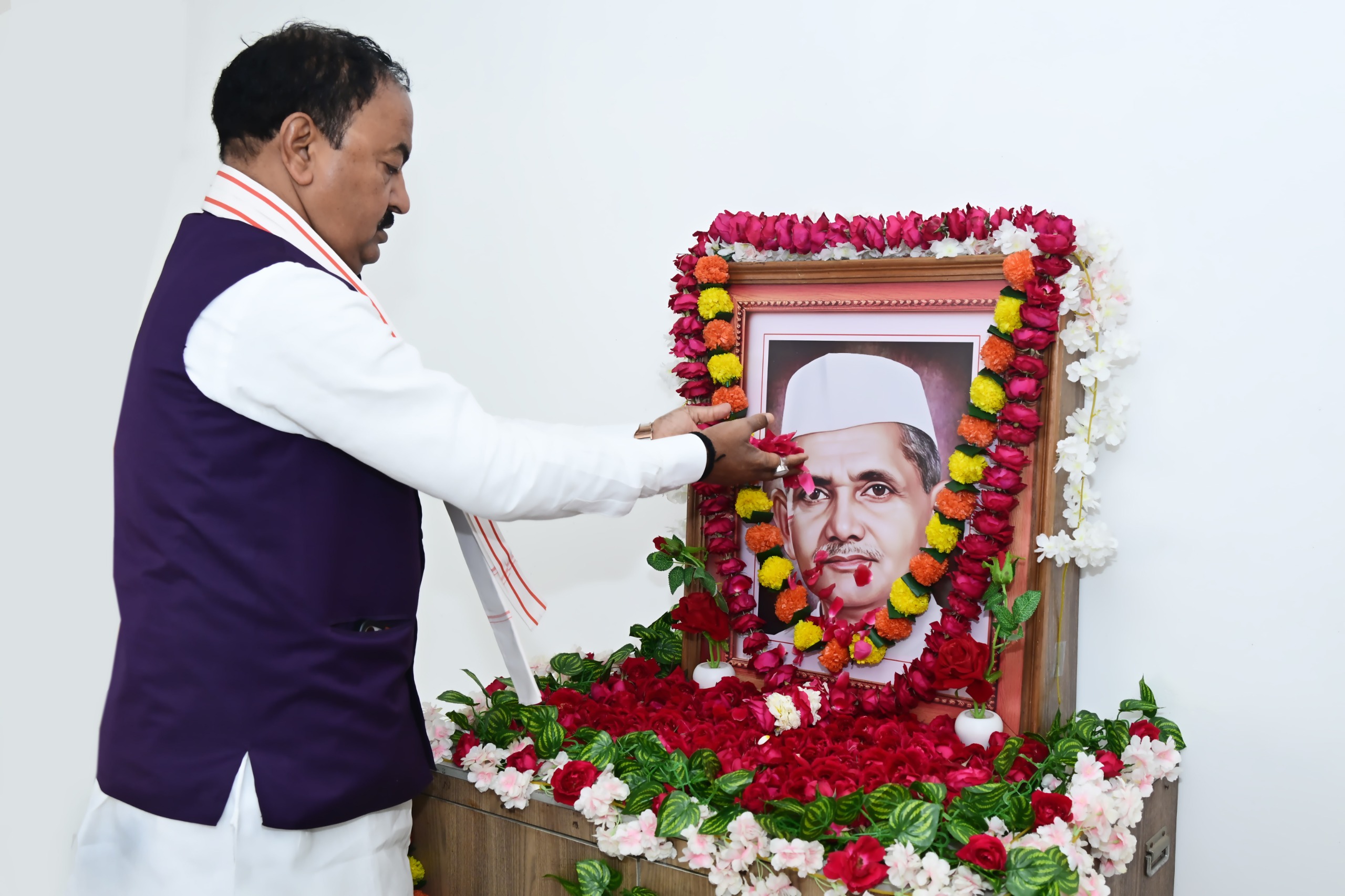



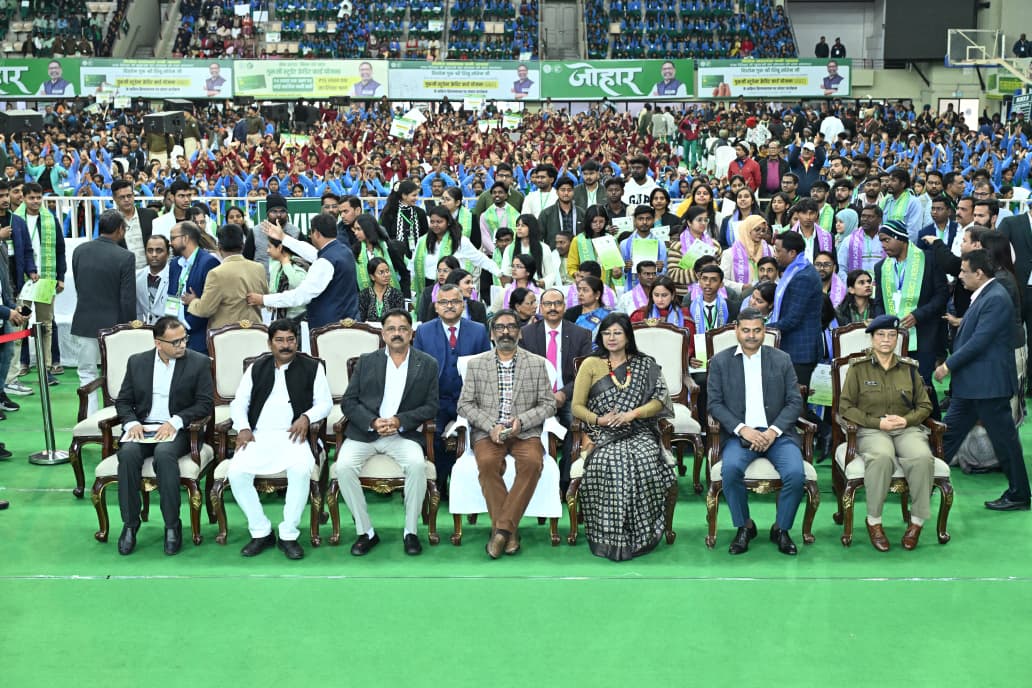
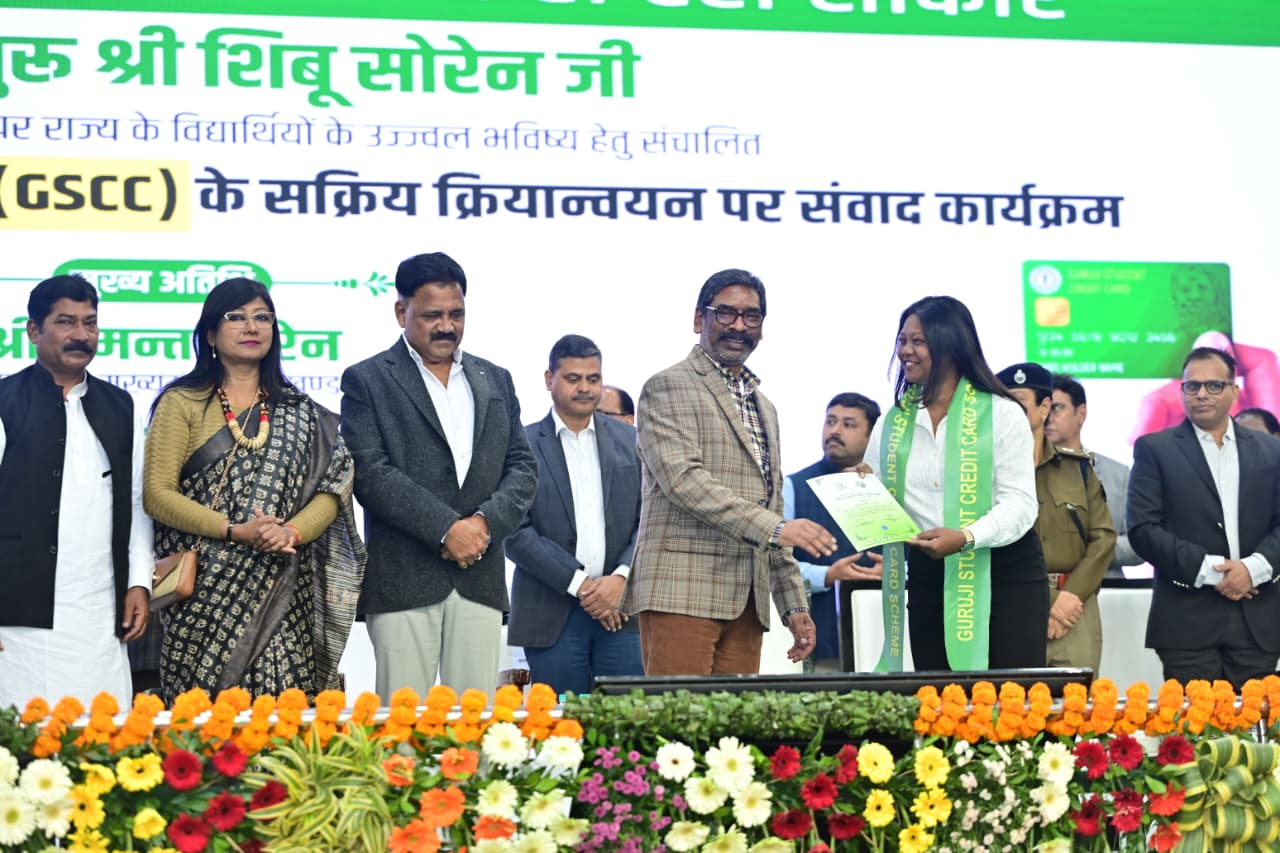
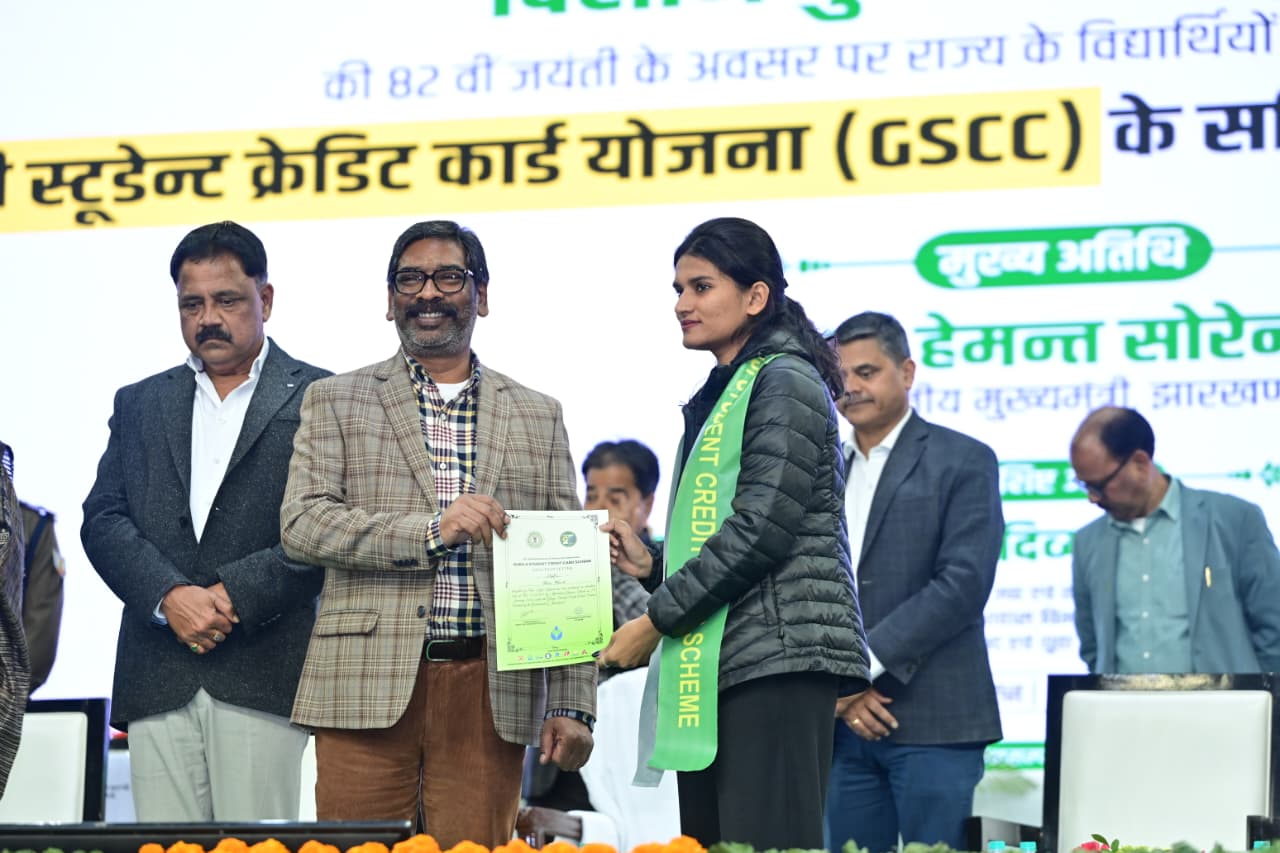
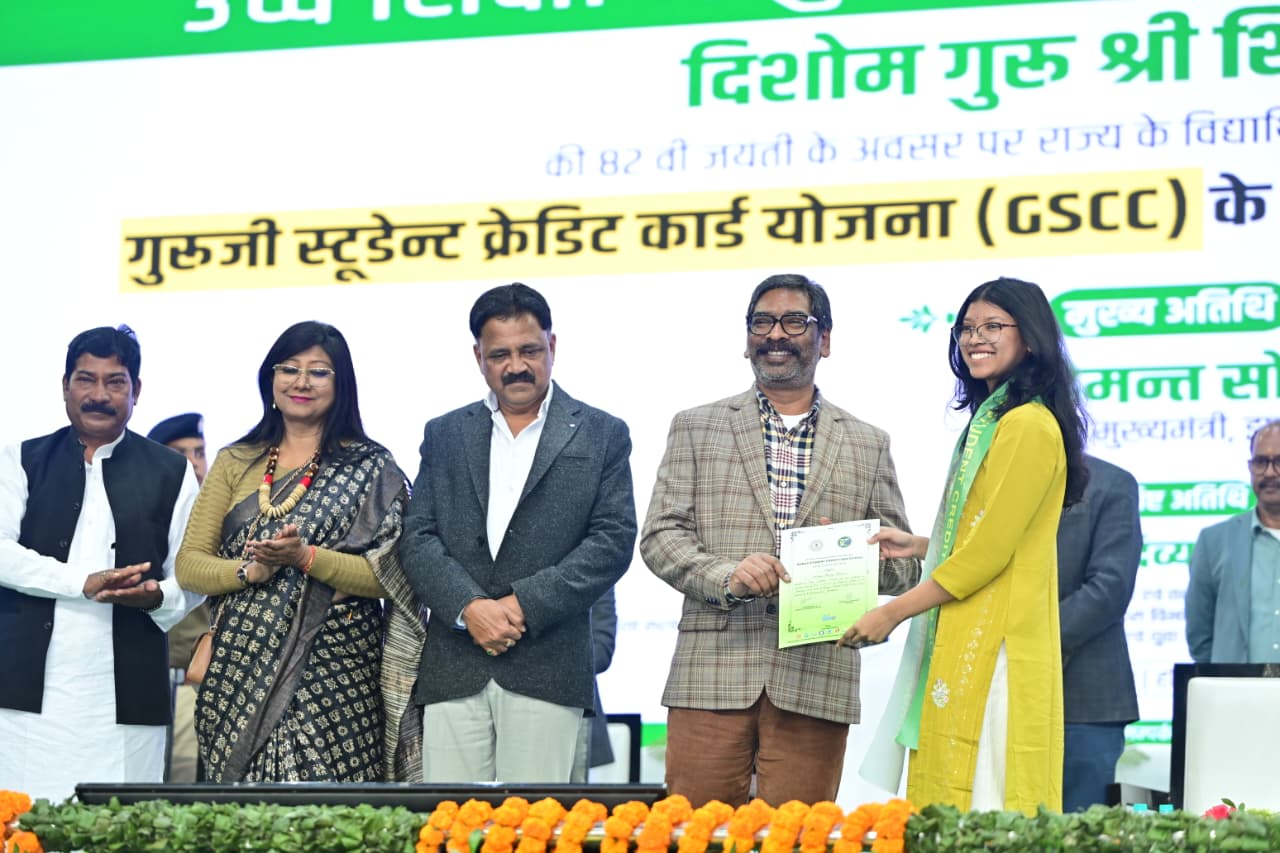
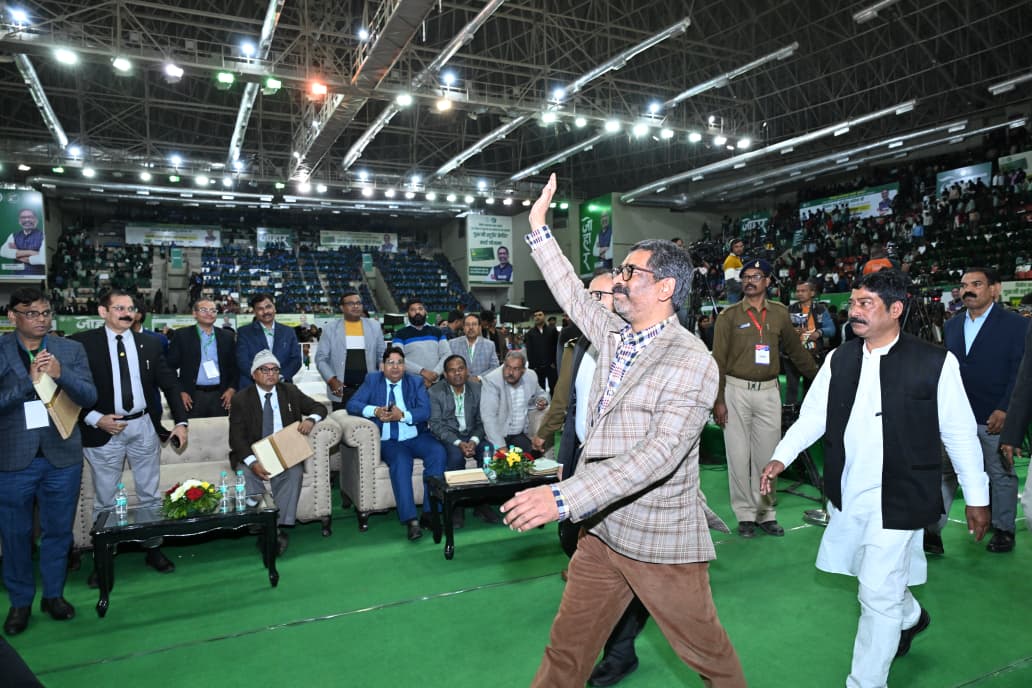
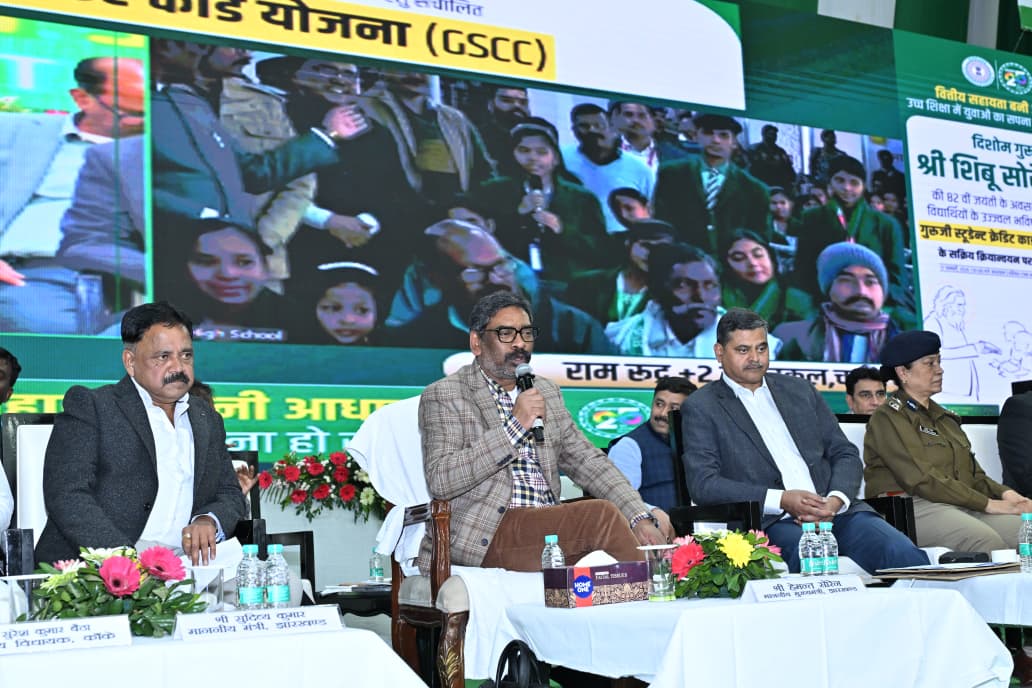
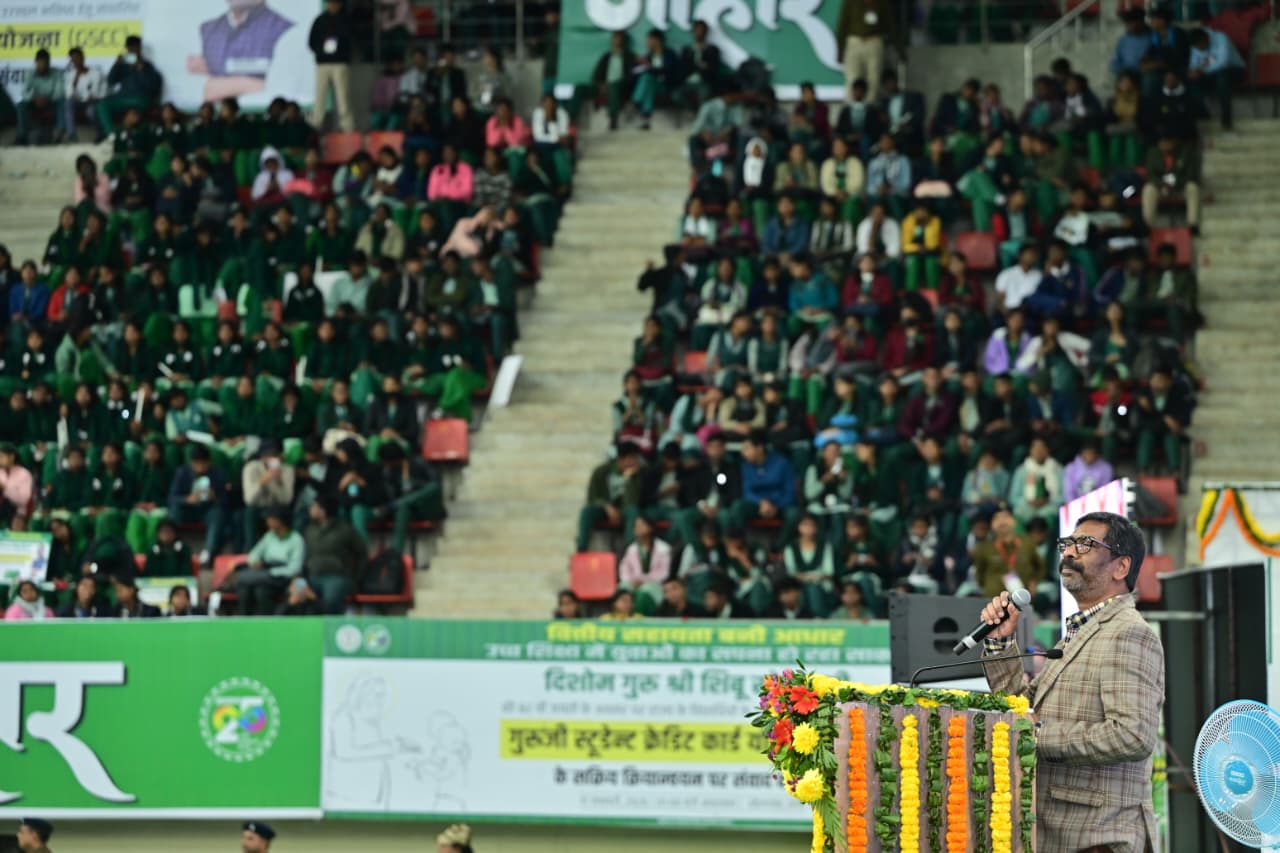
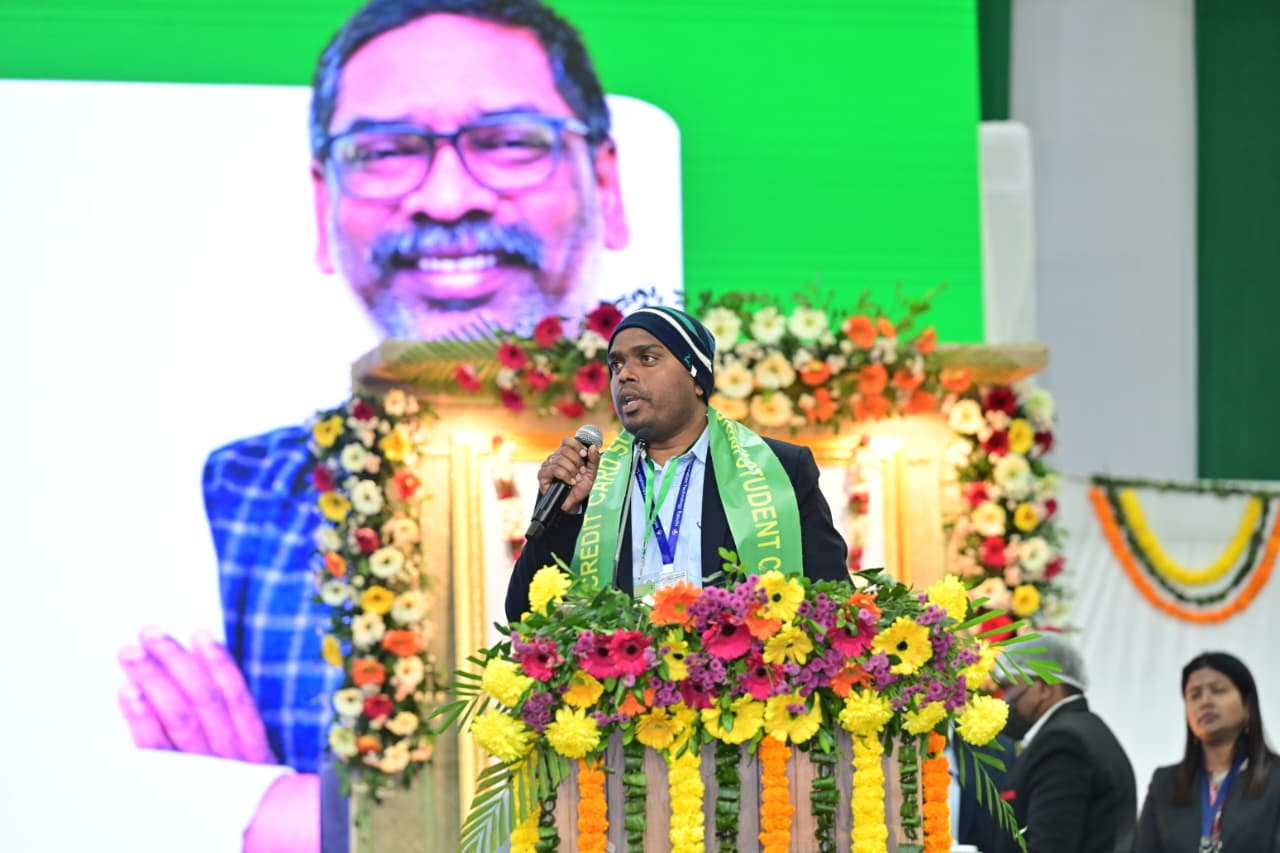
3 hours ago
- Whatsapp
- Facebook
- Linkedin
- Google Plus
0- Whatsapp
- Facebook
- Linkedin
- Google Plus
2.6k